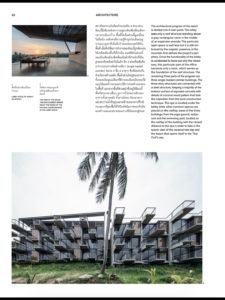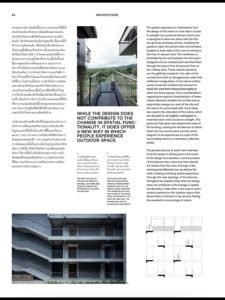VARIVANA RESORT CONCEPT
The hotel is located on Phangan Island, an island south of Thailand. It is situated on a serene hillside, surrounded by coconut orchard with an ocean-view at the horizon.
Designed for well-being and experience-based tourism, main concept of the project evolves around these 2 keywords: simplicity and new experience.
The hotel offer 40 guest rooms with main public spaces including restaurant, spa and swimming pool. Layout and composition of the buildings is derived from the desired guest experience. Buildings are strategically placed at the back of the site, hidden behind lush of green scape of the main road and slightly staggered in such a way that, from guest rooms, view of surrounding landscape is uninterrupted while allows maximum natural light into each and every rooms.
For guests, the hotel slowly reveals itself through a narrow access roadway from the bottom of the site leading to the lobby space uphill. Characterized as a platform with roof, lobby is an open-air space that welcomes guests with scenic view of the surrounding landscape; manmade-wall becomes unnecessary.
Located on the rooftop are the main public areas, including restaurant, swimming pool and lounging area. From its height, the area provides guests with panoramic view of mountain, ocean and sunset in the distance.
For the Guest rooms, cherishing nature of tropical climate is key. Rooms come with two entrance doors: one at the foyer providing security and the second for complete enclosure. Along With the introduction of open-air foyer, light well and openings on both sides of the room, the hotel encourages guests to stay in contact with all natural elements: sun, wind and rain. While natural light filtering both indoor living and bathing space, direct exposure of sunlight occurs at balcony. With its unique formation, an extension of 2.5 meters from the room, balcony area offers a new way in which guests experience this outdoor space; to see and be seen.
The hotel incorporates simple material palette. Exposed concrete is chosen for exterior finish; through the use of local coconut wood as formwork, subtle reference of the local is made. Its rawness and non-uniform finish, varied in shade and texture, creates an interesting character for the building. While rawness is presented outwardly, inside is imbued with warmth and comfort through the use of black terrazzo and teak wood.






